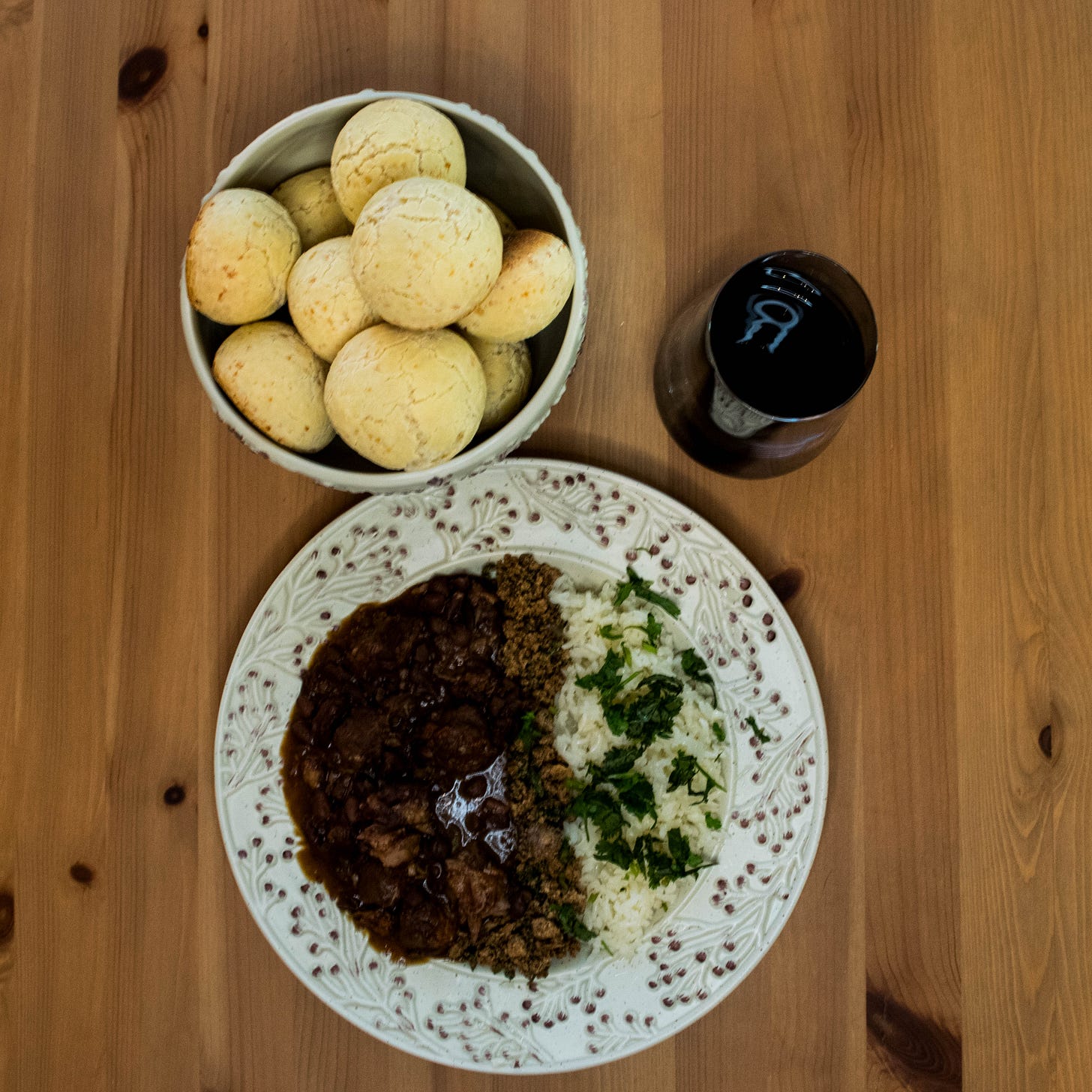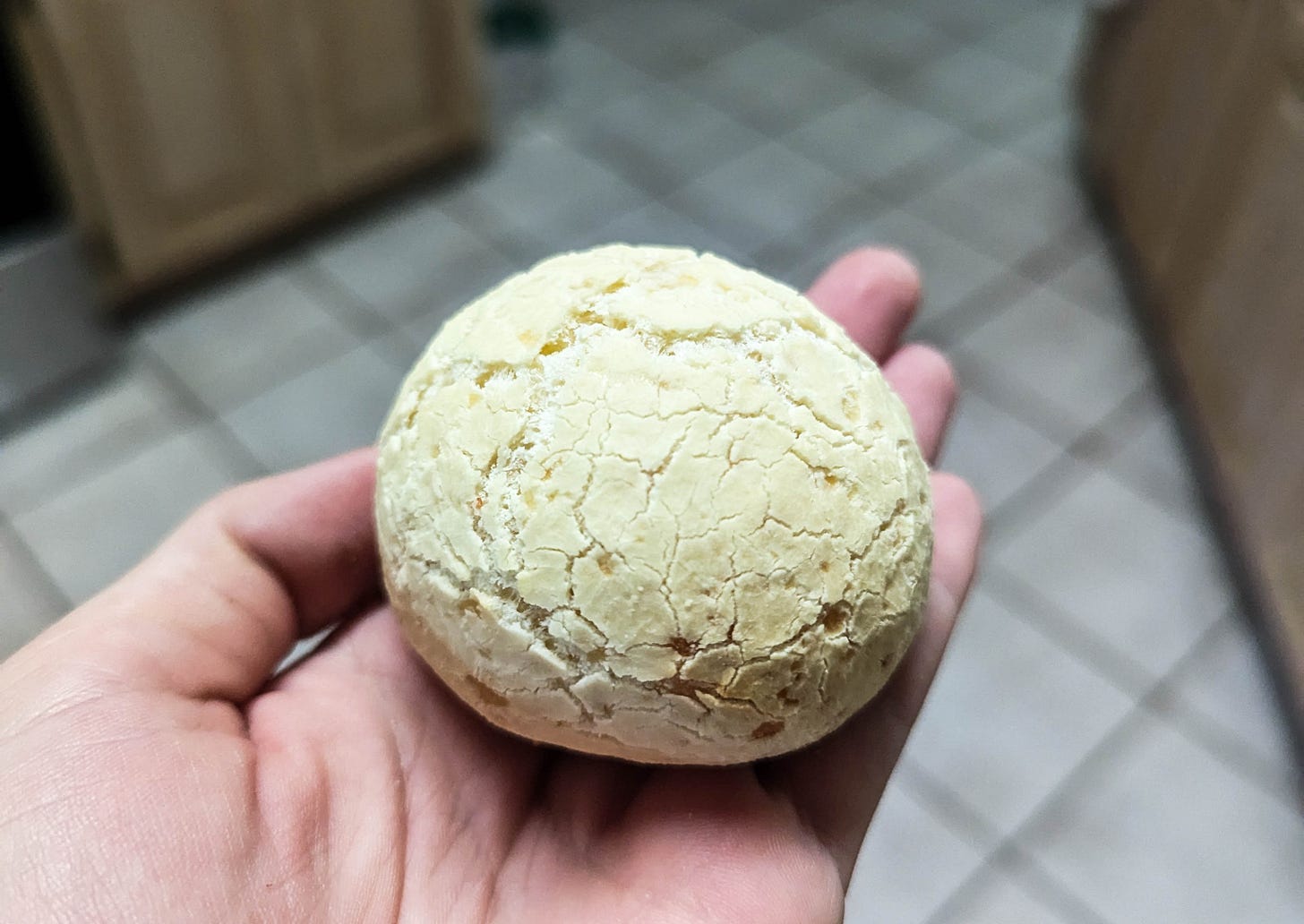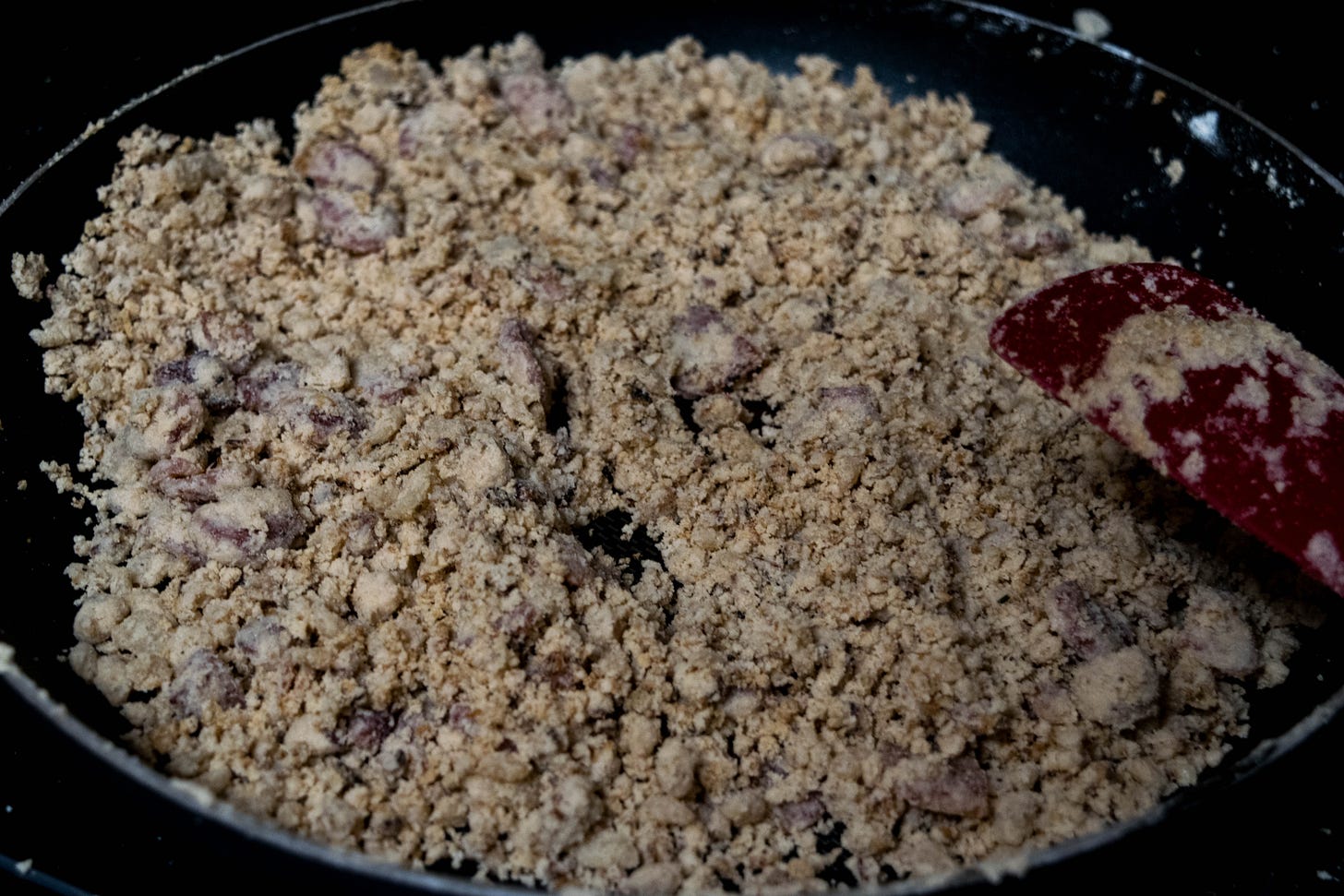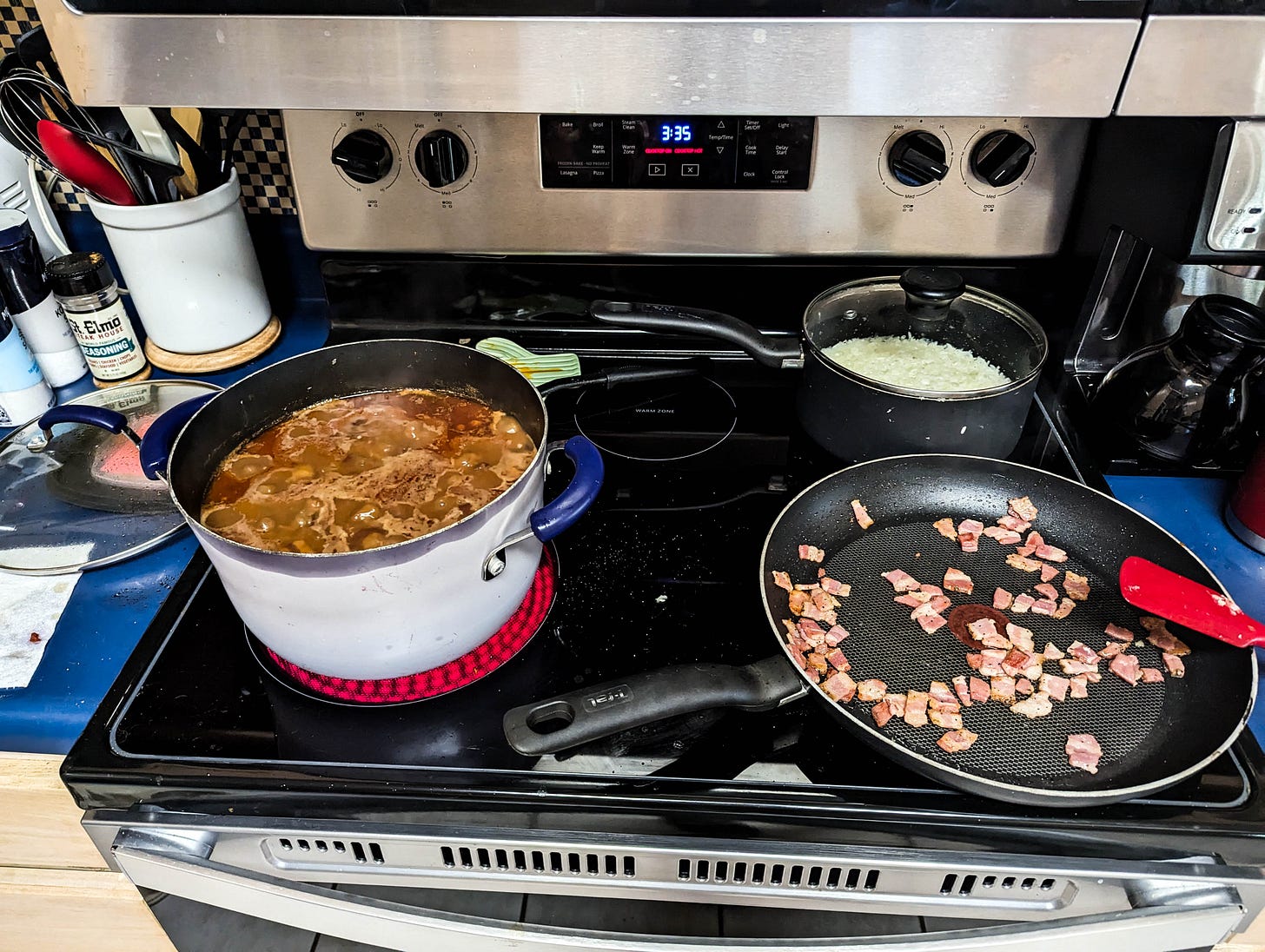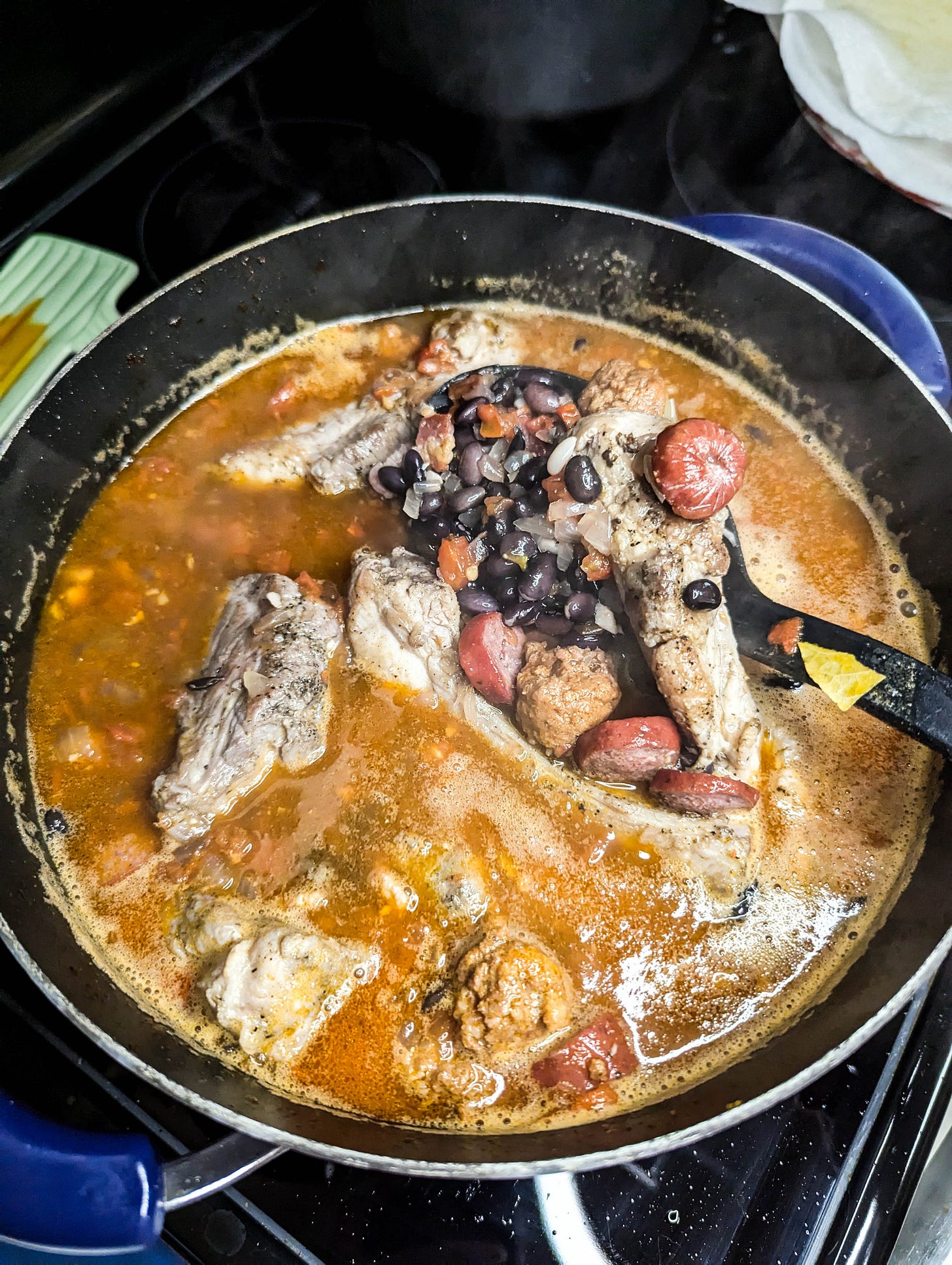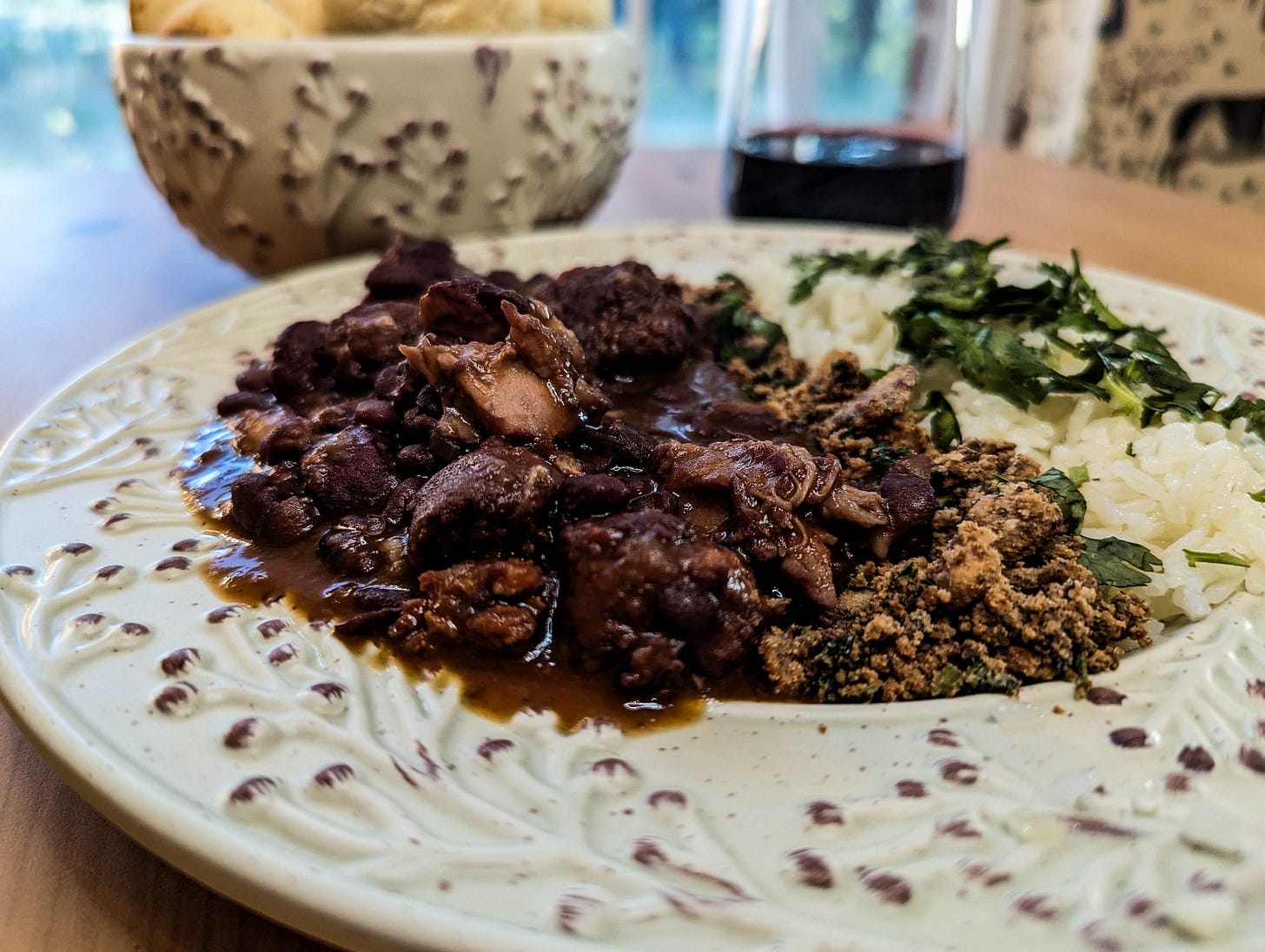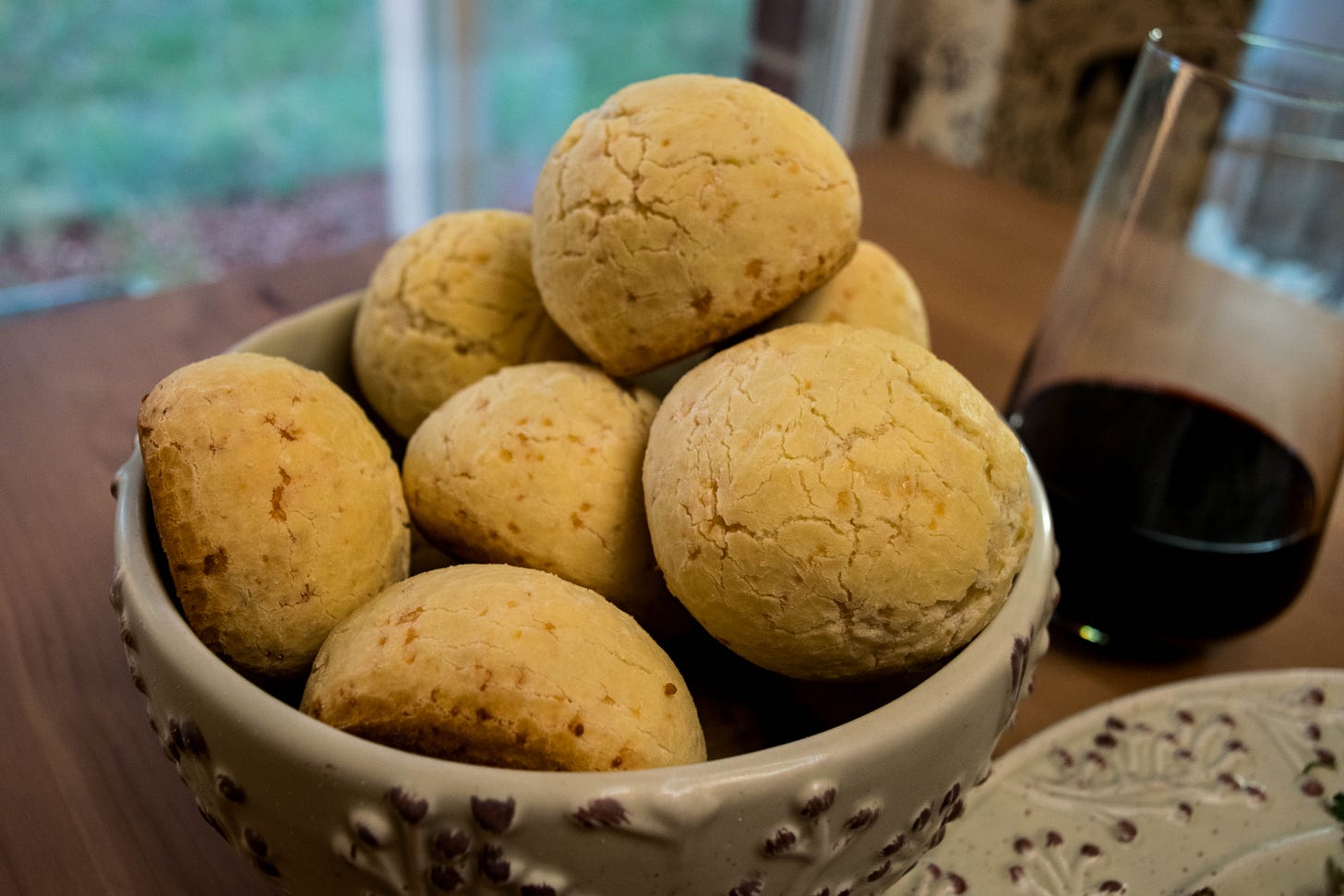Brazil's National Dish, Feijoada, for This Year's Grand Prix
Welcome to Grand Prix Gastronomy! This week, I’m cooking feijoada, Brazil's national dish, with other regional delicacies on the side.
This project is pretty simple. As a complement to each race weekend, I’ll be cooking the national dish of that race’s host country and sharing information about the process and that dish’s history along the way in an effort to grow more deeply immersed in the local culture from my own home.
What Is Feijoada?
The Culture Trip tells me that feijoada is Brazil’s national dish, and I am not going to argue, because I’ve been dying to try this dish for ages. My experience with Brazilian food starts and ends at the Brazilian steakhouse my family finds a reason to frequent for every holiday, birthday, or life occasion — which means I generally just eat a whole lot of meat carved right onto my plate from a sword and then leave 30 minutes later with a prodigious food baby.
Feijoada is a black bean and pork stew prepared in many Portuguese-speaking countries, but it’s believed to have evolved from Roman cuisine. It’s one of those dishes that can be made affordably or with choice cuts of meat, and you can expect to find it on menus around Brazil no matter the restaurant.
As with any good stew, this dish takes a hot second to cook, so if you’re keen on having it at dinner time, I highly recommend getting it in the pot nice and early. The longer you let it simmer, the better it’s going to taste.
Feijoada is usually served alongside rice and farofa — but let’s talk about these two dishes. You can just make plain ol’ white rice, but Brazilian rice is cooked with onion, garlic, and oil to impart tons of flavor and silkiness. It’s one of those sides you’ll want to eat all on its own.
Once you’ve got everything plated up, you’ll top your meal with farofa, which… is a little tough to describe. It’s a blend of cassava flour that’s toasted with bacon, onions, and herbs to create a crunchy topping. I almost want to say it’s a savory version of a coffee cake crumble topping, but I feel like that’s not fully representative of farofa’s essence.
This Week's Recipe
This week, I’m working with a recipe from Curious Cuisiniere for the feijoada, paired with farofa from I Heart Brazil and rice from Tasting Table. Pretty much everything in this recipe is super easy to source, with the exception of cassava flour. You’ll be able to find that online, if you’re looking to try out the tasty, crunchy topping.
And, because I am obsessed with them, I am making pao de quiejo, which are delicious little cheese rolls that are, essentially, little bites of heaven. I’ve found them in the freezer aisle of a few different grocery stores, if you want to save some time!
Cooking Feijoada
Even though it took me the better part of a full Sunday to whip up a feijoada completa, I'm still convinced it wasn't a particularly difficult endeavor. If you're mostly okay at chopping a couple veggies and can adequately brown meat, you're golden. The big thing to keep in mind is to allow yourself ample time to get everything done.
That's because the foundation of this dish is dried black beans, and before you can use ‘em in your stew, you need to let them soak in water overnight, and maybe even for about 24 hours. It's not going to totally soften the beans, but it will give you a head start on the cooking process so you don't have to keep your stew simmering on the fridge for like six hours straight.
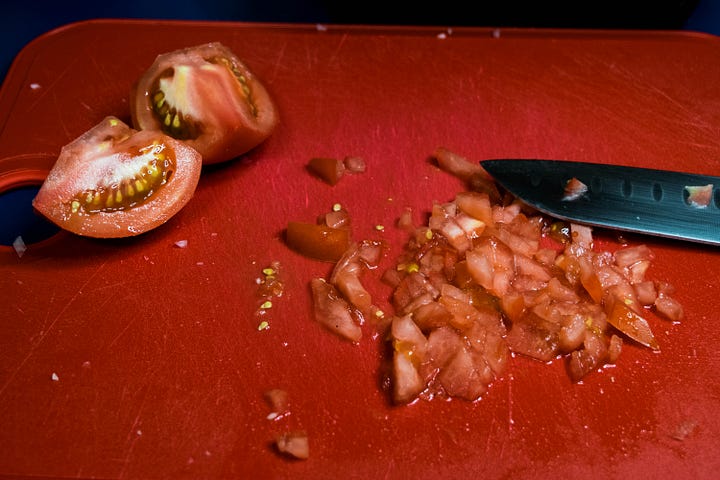
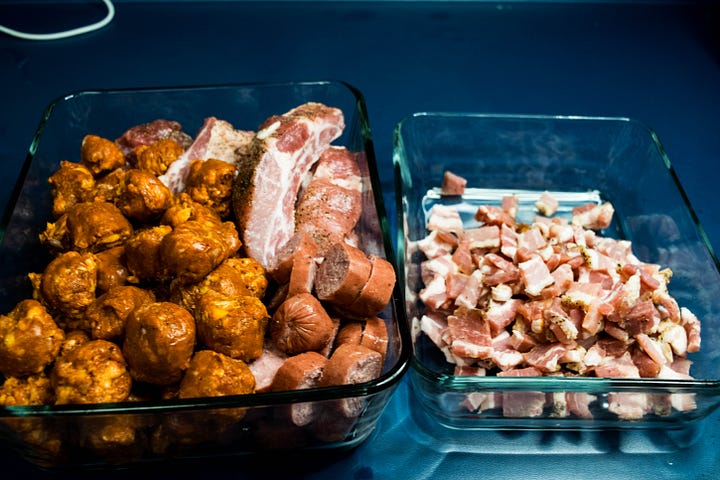
The other prep is also fairly simple. Chop up onion, garlic, and some herbs, then your meats, and voila. You're prepped!
If you're cooking the full feijoada completa, I recommend starting with the stew itself. You're going to fry some diced onion, then brown your sausage, ribs, and chorizo in batches. I recommend doing these all separately and draining the grease from the chorizo when you're done. After each meat is cooked up, set it to the side.
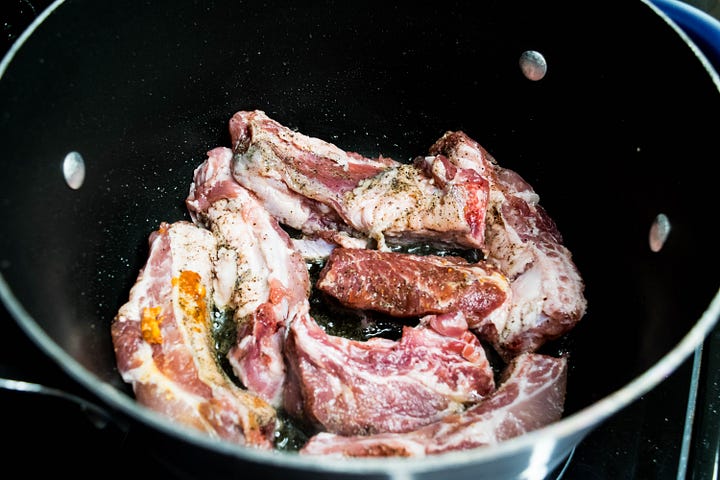
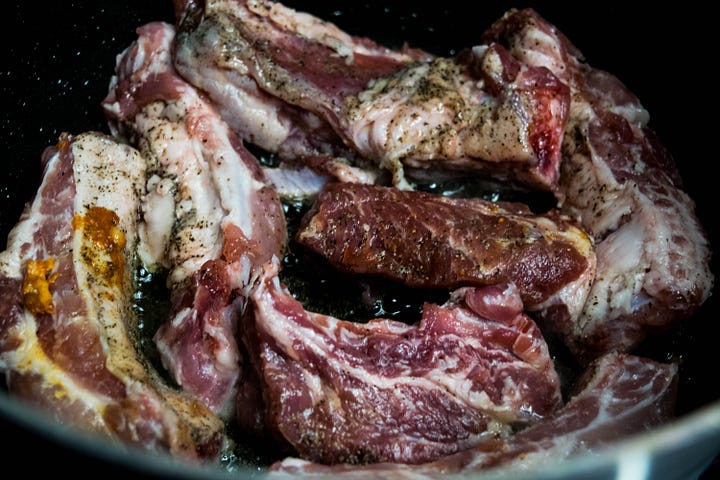
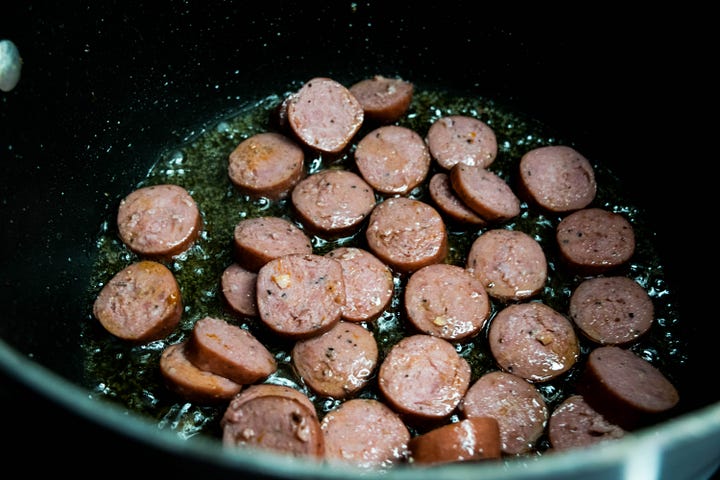
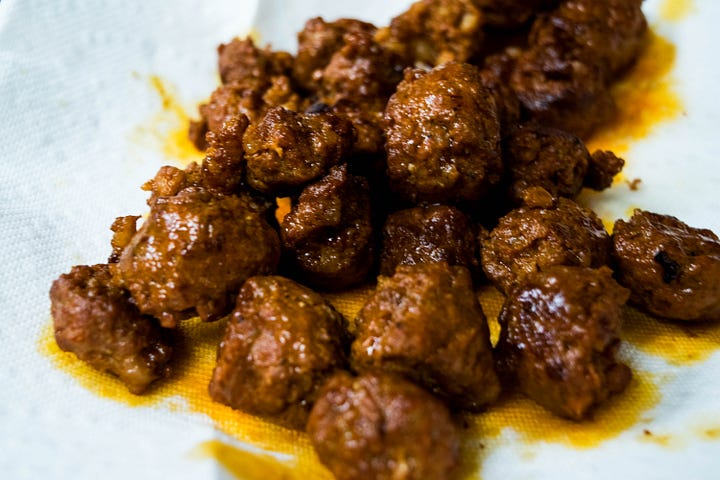
Then you'll add a little more oil to your deep soup pot and sauté your onion and garlic, then add some chopped tomatoes, and… that's mostly it. You'll drain and rinse your beans, then add them to the pot with all of the meat, some salt and pepper, and bay leaves. Get the thing boiling up, then cover the pot and drop it down to a simmer. Easy!
After that, you should whip up your pão de queijo, which are little cheese breads made of parmesan cheese and tapioca flour. You'll warm milk and oil on the stove, let it cool a little, then slowly mix it into your flour. Dump in the parm, knead until the dough is smooth, and then split the dough up into little balls. You'll bake those in the oven, and they should come out nice and chewy! (And yes, there's no rise time needed here, though if you find your dough is really sticky and hard to work with, you should let it set before you form the balls.)
Up next comes our Brazilian rice! Rinse long grain rice in cold water, then sauté an onion and garlic in olive oil. As that cooks, boil two cups of water. Pop the rice into the onion and cook the grains for a few minutes, then pour in the boiling water. Reduce that to a simmer and cover the pot, then remove the lid and let it finish cooking with the heat off. When you fluff the rice with a fork, it should be light and airy.
And then came my biggest challenge: farofa. You'll cook some diced bacon, then add in butter and sauté garlic and onion. Then you'll sprinkle in your cassava flour, stirring it constantly so it doesn't burn. In theory, it should toast up and get a little crunchy, but mine… just did not do that. Instead of being nice and flavorful, it just kinda tasted like flour. It was not ideal, and I was disappointed — but I'm determined to try it again, because I've had good farofa before, and it absolutely rips.
To serve, you'll plate your rice next to the feijoada, then sprinkle the farofa on top. The cheese breads are fantastic dipped in the stew, but I ended up eating most of mine as little snacks throughout the day. I paired everything with an Argentinian malbec, which is robust but doesn't have a really long finish, which helps it pair well with pork and beans.
So, What's the Verdict?
Friends: I am obsessed. I am changed. I am a whole new person. As a Certified Bean Enjoyer and also Lover Of Meat and also Everything Is Better In Stew Form Aficionado, feijoada was exactly my kind of perfect meal. I cooked my feijoada in the middle of August, so it wasn't exactly “hot soup” weather, but I didn't care. With each bite, I could pretend that I was wrapped up in a nice sweater watching the rustling leaves change colors. It was exceptional.
I also want to give myself a lil shoutout for starting this project, because I think I've finally started to figure out the whole concept of cooking delicious, flavorful rice. I've always thought I'm too white to figure it out, but it turns out I just needed to actually consult a recipe, rinse my rice, and add some delicious aromatic additions for added flavor. While I did end up burning a bit of the bottom layer of my Brazilian rice, it wasn't the end of the world; I ate it like a crisp and delicious disc of carbonization, and I was pleased.
And the pão de queijo was another success, though my first batch of them were Mostly Just Fine. I'd never cooked with tapioca flour before, and I do think I let my milk sit on the stove for a little too long, but that first experiment was promising enough that I made an additional batch the very next weekend to bring to a family dinner. Reader: they were a hit.
That leaves us with one final component of my dish, the farofa. I'm going to be honest: I don't know what the hell happened here. This was the part of the meal I was most excited about, because I've had some pretty good farofa before, and it's kind of like having tasty bread crumbs sprinkle on every bite of your dish.
I fucked mine up. Maybe it was the brand of cassava flour I bought, or maybe it was the recipe I used, or maybe it was just me being totally lost, but the cassava never really crisped up. It seemed to just absorb all the butter and grease I added to it, making tiny clumps while the rest of the flour just stayed flour-y. I sprinkled it on my dish, and guess what: it just tasted like flour. I'm really disappointed, because this is one of those recipes that I'd make all the time just to add a little extra pizazz to, like, a pasta dish or a different kind of stew. If you know what I've done wrong here, please tell me!!!!!
All things considered, though, I was so stoked about how my culinary Brazilian Grand Prix adventure went — and if you only stick with the feijoada, it's actually pretty easy. The most challenging part is cooking all the meats, and that's not even “hard” so much as it is just tedious. But once everything is browned up nice, it's a definite “set it and forget it” meal.
Let's Chat!
If you want to stay tuned…
Here are all the relevant links in one place, if you want to subscribe:
All Grand Prix Gastronomy-related content will be free — but if you want to drop me a donation on PayPal, that’s always welcome.





